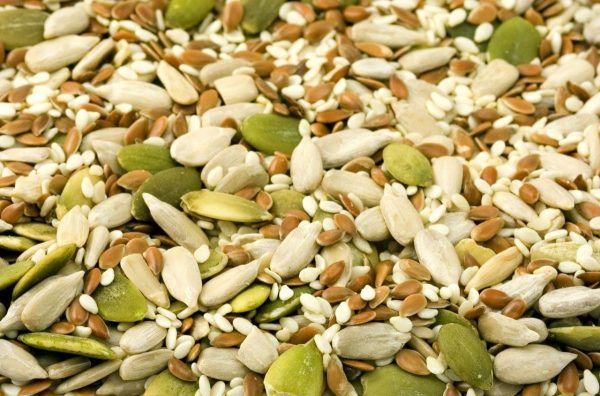You probably encountered pure magnesium at school as the silvery white metal that burns with a dazzling brilliance, demonstrated to you by your science teacher. However, its real importance is in the way nature uses magnesium’s chemical properties in the plant molecule chlorophyll, which harvests energy from the sun and converts it into a form that can be used by the human body – carbohydrate.
More...
In the body, magnesium is present in its ionic form, either loosely bound to proteins or in solution, where it plays an absolutely pivotal role in energy production.
Why do we need magnesium in our diet?
Magnesium is absolutely crucial for enzymes involved in the synthesis of ATP.
The average human can store no more than about 100g of ATP, which means that when ATP has been spent by, for example, helping a muscle to contract, it must be quickly regenerated again from ADP and phosphate.
During strenuous exercise the rate of ATP turnover is phenomenal – as much as 15kg of ATP is broken down and reformed every hour!
It's also essential (together with calcium) in facilitating muscular contraction and relaxation, stabilising cell membranes and nucleic acid structure. It also appears to play a role in stabilising blood sugar levels.
Research also indicates the importance of adequate magnesium intake in facilitating proper bone mineralisation.
How much magnesium do I need?
The current Australian Recommended Daily Intake (RDI) for magnesium is set at 420mg/day for adult males and 320mg/day for adult females.
With an increasing emphasis on pre-prepared, refined and fast foods, magnesium insufficiency might be becoming worse. T
o complicate matters, research indicates that strenuous physical activity lowers blood magnesium and that the current RDIs may be too low for very physically active people.
What foods are high in magnesium?

Magnesium is well supplied in unrefined whole grains and cereals, green leafy vegetables, nuts and seeds, peas, beans and lentils. Fruits, meat and fish supply relatively poor levels.
Refining food depletes magnesium levels – for example a typical whole wheat roll might contain around 50mg whereas a white roll of the same size may contain less than 12mg.
Contrary to what you might believe, milk and dairy products are not a good source of magnesium.
What happens if I don’t get enough magnesium?
The most common day to day symptoms of magnesium insufficiency include muscle cramps, fatigue, feelings of irritability or lethargy, mood and energy swings, pre-menstrual bloating and restless legs at night.
In the longer term, low magnesium intakes have been associated with increased blood pressure and risk of heart disease, an increased risk of osteoporosis, reduced glucose tolerance and reduced control of diabetes.
Who should take most care to maintain magnesium intake?
Athletes and fitness enthusiasts, women (especially those on caloric restriction), the elderly and those whose diets include significant amounts of refined or processed foods are all at an increased risk of magnesium insufficiency.
Magnesium uptake is also reduced by high protein or high fat diets so if you’re following such a diet, you’re also at risk of sub-optimum magnesium intake.
Can I get too much magnesium?
Magnesium is relatively non-toxic and easily excreted, even at high levels and it’s unlikely that even a very magnesium-rich diet could cause problems.
Supplementation up to 700mg is unlikely to cause any problems although intakes of 350mg per day is preferable for safe and effective long-term daily supplementation.
How do I know I'm getting enough magnesium?
Use this chart to see whether your diet is likely to contain enough magnesium. The best sources are nuts, seeds, whole grains and legumes. Remember, refined foods generally contain little magnesium.
Magnesium content of common foods
Food | Portion Size | Magnesium Content |
|---|---|---|
Pumpkin seeds | 100g | 592mg |
Brazil nuts | 100g | 350mg |
Sesame seeds | 100g | 340mg |
Almonds | 100g | 266mg |
Peanuts (roasted, salted) | 100g | 180mg |
Walnuts | 100g | 150mg |
Spinach | 100g | 107mg |
Rice (Brown) | 100g | 72mg |
Bread (wholemeal) | 100g | 62mg |
Rice (white) | 100g | 32mg |
Banana | 100g | 31mg |
Potato (baked) | 100g | 30mg |
Baked beans | 100g | 27mg |
Bread (white) | 100g | 27mg |
Yoghurt (plain, low fat) | 100ml | 18mg |
Broccoli | 100g | 17mg |
Cornflakes | 100g | 13mg |
Milk (skimmed) | 100ml | 11mg |
Apple | 100g | 4mg |
Honey | 100ml | 4mg |
*Figures supplied by Australian Food Composition Database - FSANZ | ||
This article is part of a series examining different nutrients and our requirements for them. Read other articles in my nutrient spotlight series.
